Samsung Galaxy Z Flip 4 camera review: Beyond the margin of error
Mostly marginal improvements, but a better overall experience.
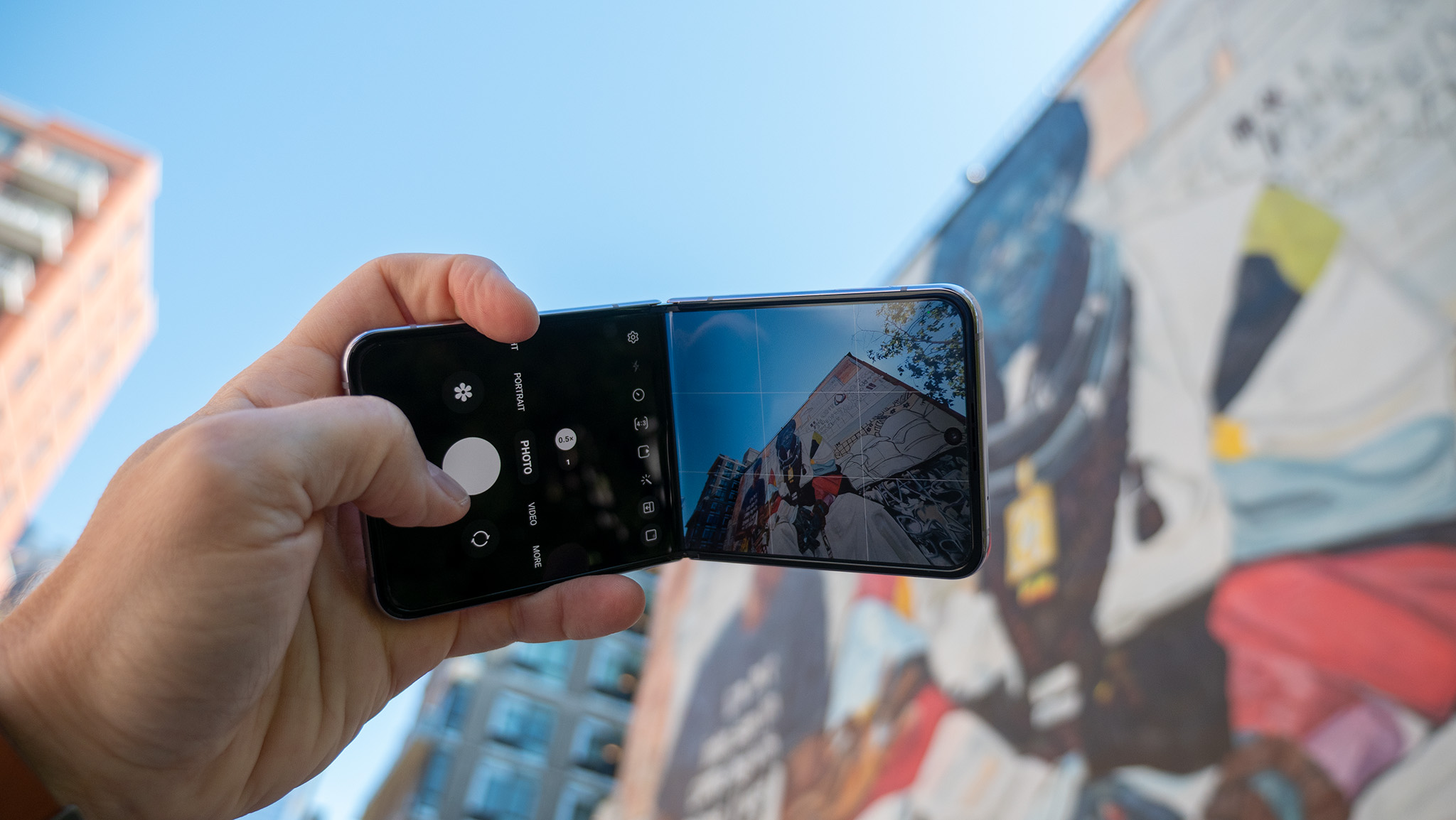
If you put the Samsung Galaxy Z Flip 3 and Z Flip 4 side by side, you won't notice too many differences. There's a bit of a nip and tuck done to the Flip 4 thanks to a smaller hinge, but otherwise, they look extremely similar. That is, until you take a look at the camera module on the back.
That's because the Samsung Galaxy Z Flip 4 got a notable camera upgrade over the Flip 3, causing the lenses to protrude just a bit to fit the camera sensors underneath. Those lenses are also larger and able to take in more light, and Samsung even improved the front-facing selfie camera quite a bit, citing that it's 65% brighter than the one on the Flip 3.
To put these claims to the test, I took the Z Flip 3 and Z Flip 4 around with me for several weeks, including on a trip to New York City for some cityscape testing that's not so easy to get where I live. The Flip 4's camera is definitely better than the Flip 3 — and great Galaxy Z Flip 4 deals make it a pretty cheap upgrade — but just how much better? Let's break it down.
Flip 3 vs. Flip 4 main camera
The main rear-facing camera of the Flip 4 received one of the biggest upgrades of all, with a brand-new imaging sensor that's substantially larger and, as a result, sports physically larger pixels. Those pixels now measure 1.8μm in size — that's compared to the 1.4μm pixel size on the Flip 3 — and, combined with the larger lenses, should help produce better results in every situation.
In this first daytime sample, I used the cover of clouds to see how well each phone captures the dull, flat lighting of a gray day. The Z Flip 4 produced a much naturally sharper image with a lot more detail all around, especially on the pavement and the brick walls, where a lot of natural texture variation exists. But the Flip 3's exposure, in this particular picture, is a lot nicer, as the Flip 4 crushed the blacks in the shadows quite a bit.


Now for some sunlight! I took the Flips with me to one of my favorite local orchards for the first apple picking of the season. What I came away with was not just a big box full of great apples, but a bit of a surprise at just how much better the Flip 4's camera can be at times.
Here, you'll immediately notice the difference in tonal quality in both photos. The Flip 3 looks washed out as it tried to brighten me up to balance out the bright sky behind. Meanwhile, the Flip 4 seems to have had no problem with this challenge, very likely owing to the larger pixel size on its main sensor.
Be an expert in 5 minutes
Get the latest news from Android Central, your trusted companion in the world of Android
The physically larger sensor also produces a nice bit of natural bokeh on the Flip 4's photo, while the Flip 3's photo looks more like everything is somehow in focus at once. This is just using Auto Mode, mind you, not the phone's portrait mode, which we'll get to next.


Next, I use the portrait mode in an attempt to create the ultra-shallow depth of field that a DSLR camera with a low aperture lens would create. This photo of an apple tree shows that both phones do a surprisingly good job of isolating individual objects to artificially blur out, giving the look of a camera that cost a lot more money than what's in a phone.
Like the previous photo, though, the Flip 4 did a better job of balancing out the tonal differences in the shot. From what I can tell, the lens design helps alleviate glare from the sun better than on the Flip 3.


In this lower-light shot, I took a photo of my son's giant stuffed animal giraffe with no lights on and only one window open. It's not quite nighttime low light, but it is pretty indicative of indoor scenes in homes, and how challenging lighting can be for phones. Cycling between the two, you'll notice a notable improvement in the amount of detail on the giraffe's fur, but the rest of the scene is pretty similar between the two phones.


Next up is actual low light. I took these at 5 a.m. to ensure it was as dark as it'll get outside. I'm combining these two shots into one little section because there's almost no difference between the two generations of phones in photo quality. Both shots are fine-enough looking, and are both well balanced and have great color reproduction.
The Flip 4 sports slightly better detail in each, but you really have to nitpick and zoom in to tell the difference. The real winner here is the capture speed. In both shots, the Flip 4 captured the shot using the automated Night Mode in about half the time it took for the Flip 3 to capture the same scene.
If we look into the EXIF data, we'll see why. The Flip 4 actually used a higher ISO — twice as high, actually — and still produced an image that looked clean and had more detail in some spots. That's definitely the result of a bigger sensor with bigger pixels.

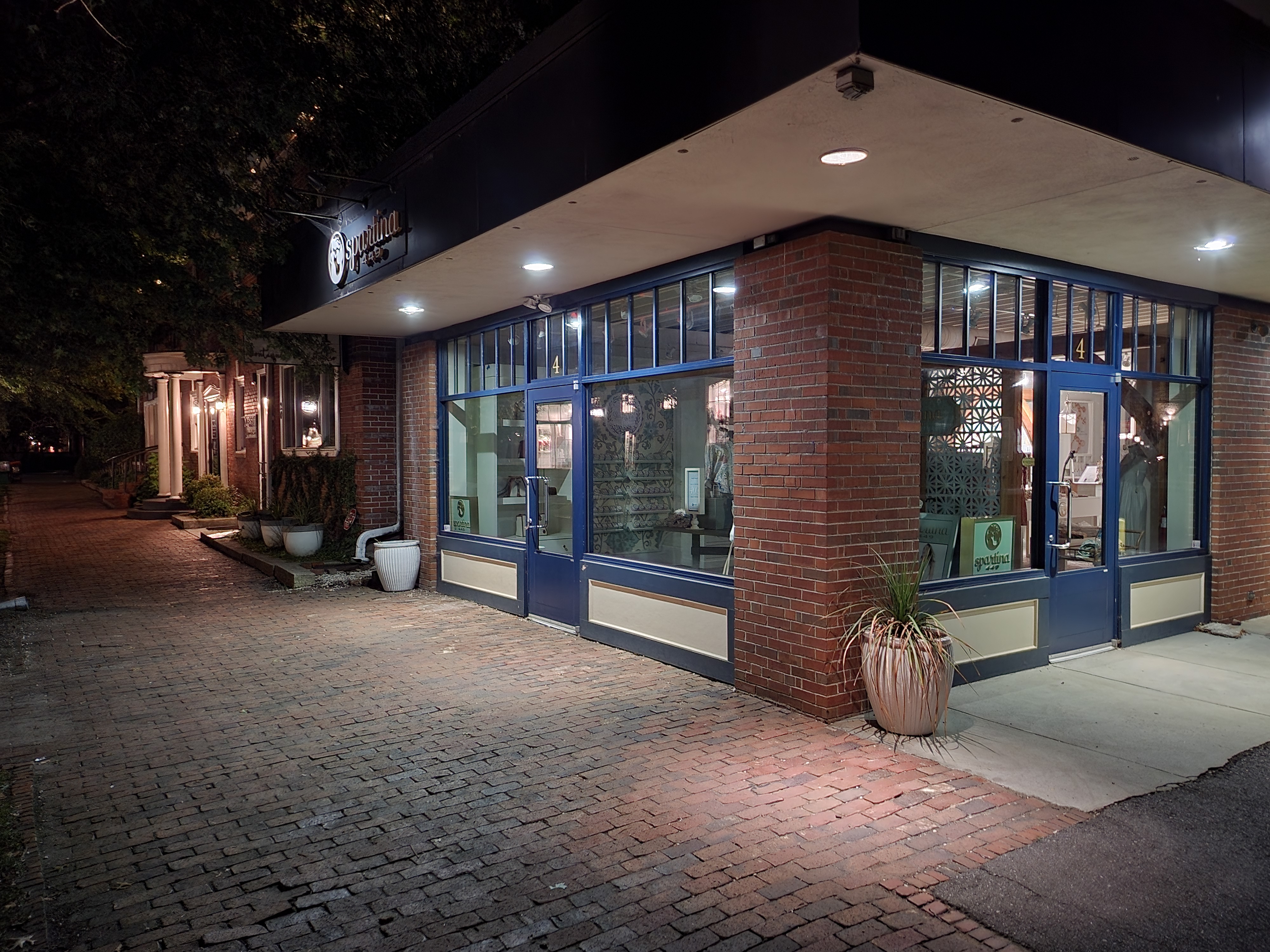


In my last test, I went to a much darker area of town that only had a single street light illuminating a heavily-graffitied building. The difference here couldn't be more clear.
Again, the Flip 4 managed to capture the image in about half the time using the automated night mode and, even with that, grabbed substantially better shadow detail in this low light scene. Quite literally everything in the Flip 4's shot looks better, from the lighting to the detail, the exposure, and even the colors. A clear win.
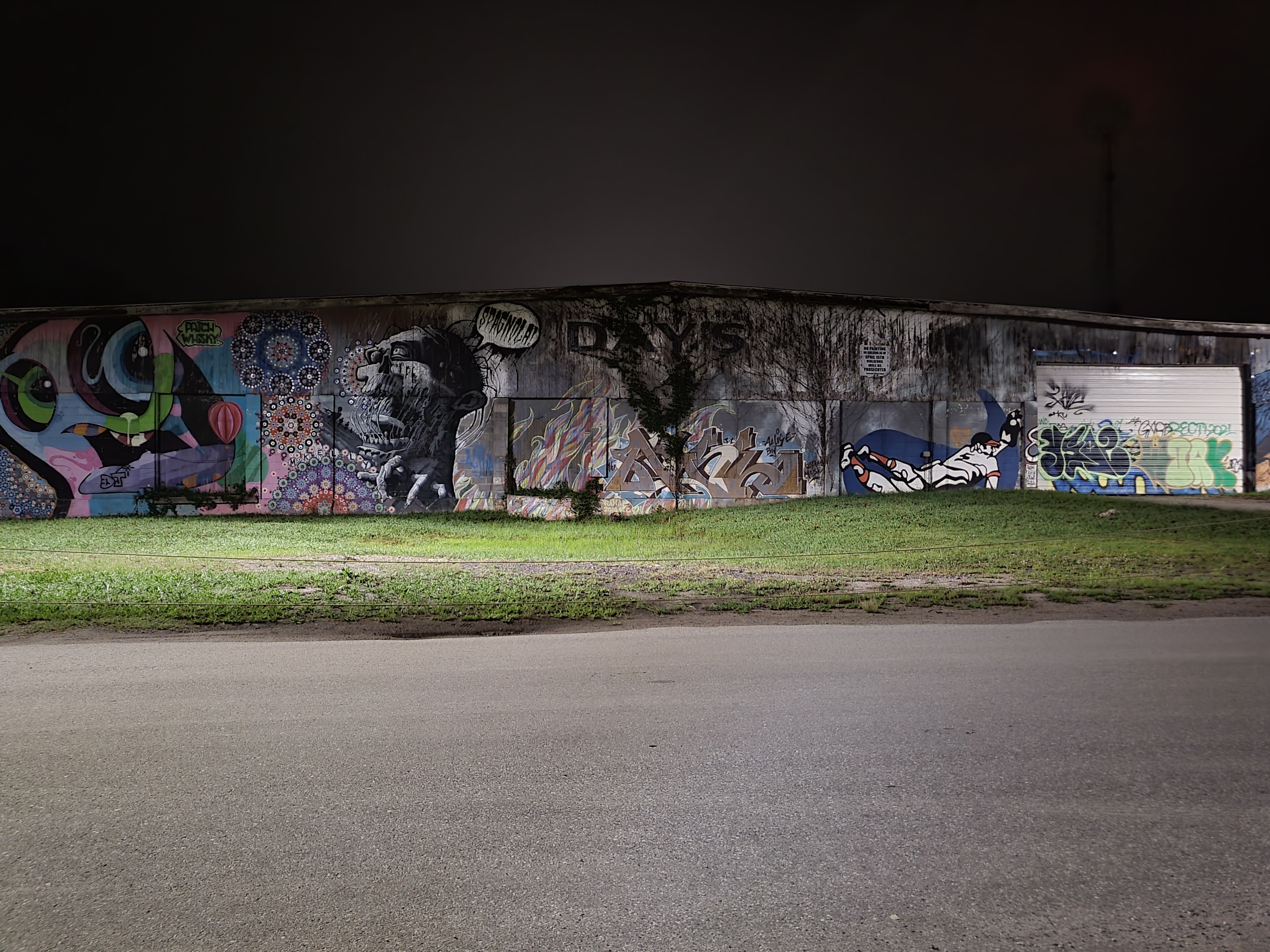

Flip 3 vs. Flip 4 zooming in
Neither the Galaxy Z Flip 3 or Flip 4 have a proper telephoto camera and, since both phones only feature a 12MP main camera, neither is capable of particularly good detail when pinching-to-zoom in the camera viewfinder. Still, it's worth taking a look at the differences to see if either phone does a better job than the other.
In this first shot, I zoomed in to 2x to crop the building for a better-framed shot. This is a pretty common tactic that people use just to get a bit closer, and while most of the attributes of these photos look no different between the Flip 3 and Flip 4, you'll notice a very strong moire pattern on the rooftop of the first graffitied building closest to the camera on the Flip 4's photo. The Flip 3 had no such problem, raising questions as to what Samsung might have done differently in the background algorithm to cause this.


Zooming beyond that is mostly a lost cause. Without a proper telephoto camera or a higher-resolution sensor to digitally replicate the effect, there's little hope that zooming in 3x or more will result in a photo you would ever want to share. Here are two examples of a 5x shot — one taken during the day and another at night — that prove the point.
If anything, Samsung looks to have upped the sharpening quite a bit at night when zooming in an attempt to create the illusion of more detail. Unfortunately, it doesn't really work.




Flip 3 vs. Flip 4 ultra-wide-angle camera
On paper, the ultra-wide-angle cameras on the Z Flip 3 and Flip 4 look the same, but it's clear from the results that something is quite different between the two phones. They both sport a 12MP sensor with ƒ/2.2, 123-degree-angle lens, and 1.12μm size pixels.
In this first example, I wouldn't say either phone produced a stellar image, by any means. Both cameras don't seem to do the best job of focusing in on any one thing — they are ultra-wide cameras and really aren't supposed to, anyway — but I do notice a very slight improvement in capturing motion on the Flip 4. Look at the tan chicken's head in both shots and you'll see what I mean.
Other than that, the Flip 4 looks like it's doing bokeh a bit better than the Flip 3. On the Flip 4 shot, the foreground is clearly sharper than the background, while the Flip 3 seems to have everything in focus all at once. The Flip 4's colors are a bit deeper, as well, while the Flip 3 has a slightly washed-out look.


Differences during the daytime might be minimal, but nighttime flips the script significantly. From the get-go, it's obvious just how much better the Flip 4's image is when using night mode. In both shots, the Flip 3 suffers from some serious sensor strain, that shows up in the form of green discoloration all around the edges of the image. The Flip 4's image is also brighter and does a better job of brightening up the shadows, while the Flip 3 has a harder time and tends to crush the blacks.
As you can see, this happens both in relatively low light — this one was taken during the day in a dark room with the lights off and only one small window open — while the other was taken at 5 a.m. in the same place as the previous section. Same results, different places and lighting conditions.


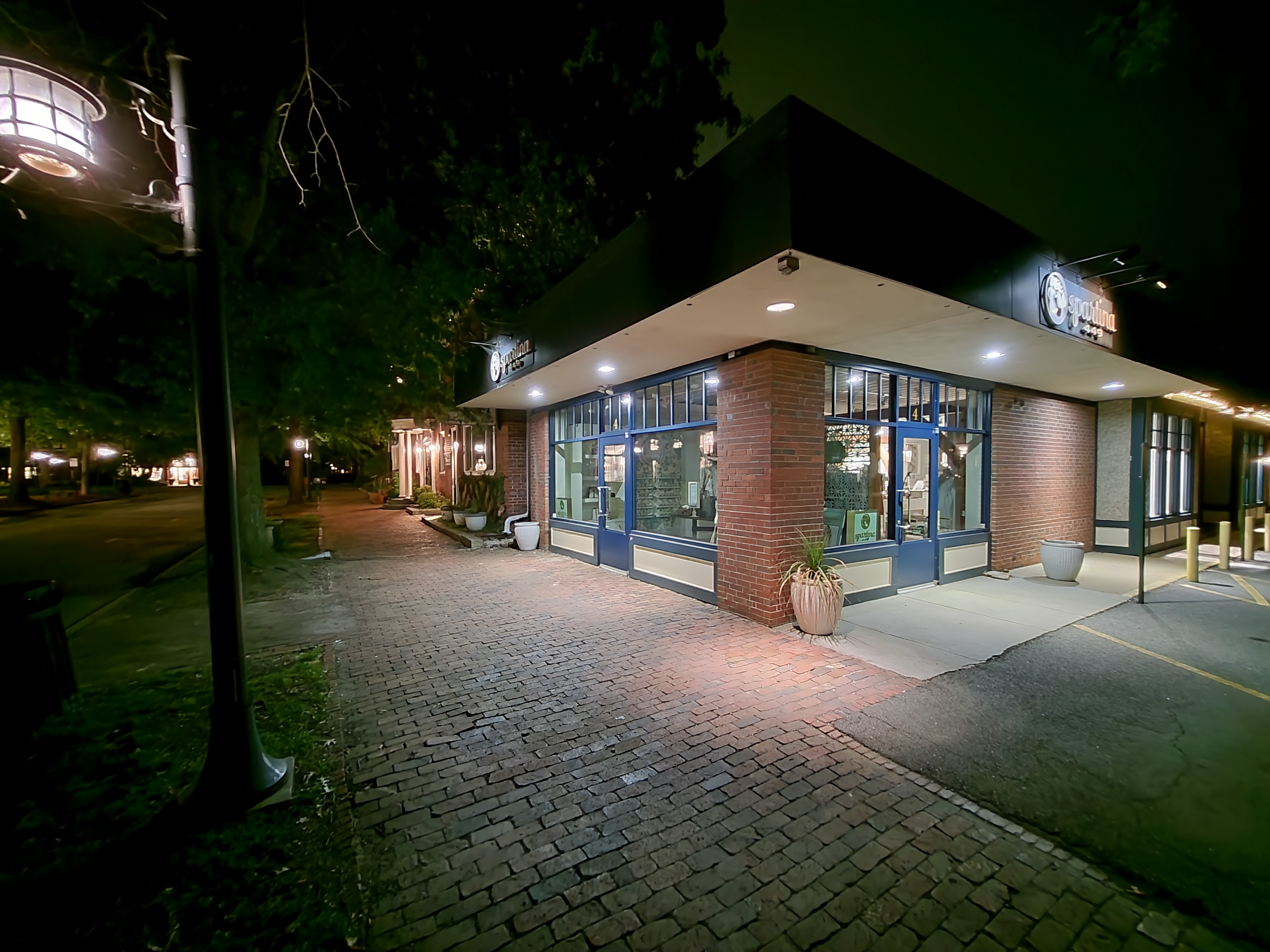

Flip 3 vs. Flip 4 front-facing camera
When Samsung announced the Flip 4, it said the front-facing camera was "65% brighter" than the one on the Flip 3. On paper, there seems to be no actual proof of this, as both seem to use the same 10MP sensor with ƒ/2.4 lens, and 1.22μm size pixels.
In daily use, there seems to be no evidence of a new sensor or anything similar to corroborate Samsung's claims. Capture time is identical between the two — even in Night Mode — and there's no obvious software differences between the two.
Looking at two daytime shots, we can see front-facing camera photos from both phones look essentially identical. There's no big difference in dynamic range or depth of field, but the Flip 4 does a slightly better job with my skin tone than the Flip 3. That was the case on two different days, using both auto mode and portrait mode, which you can see below.
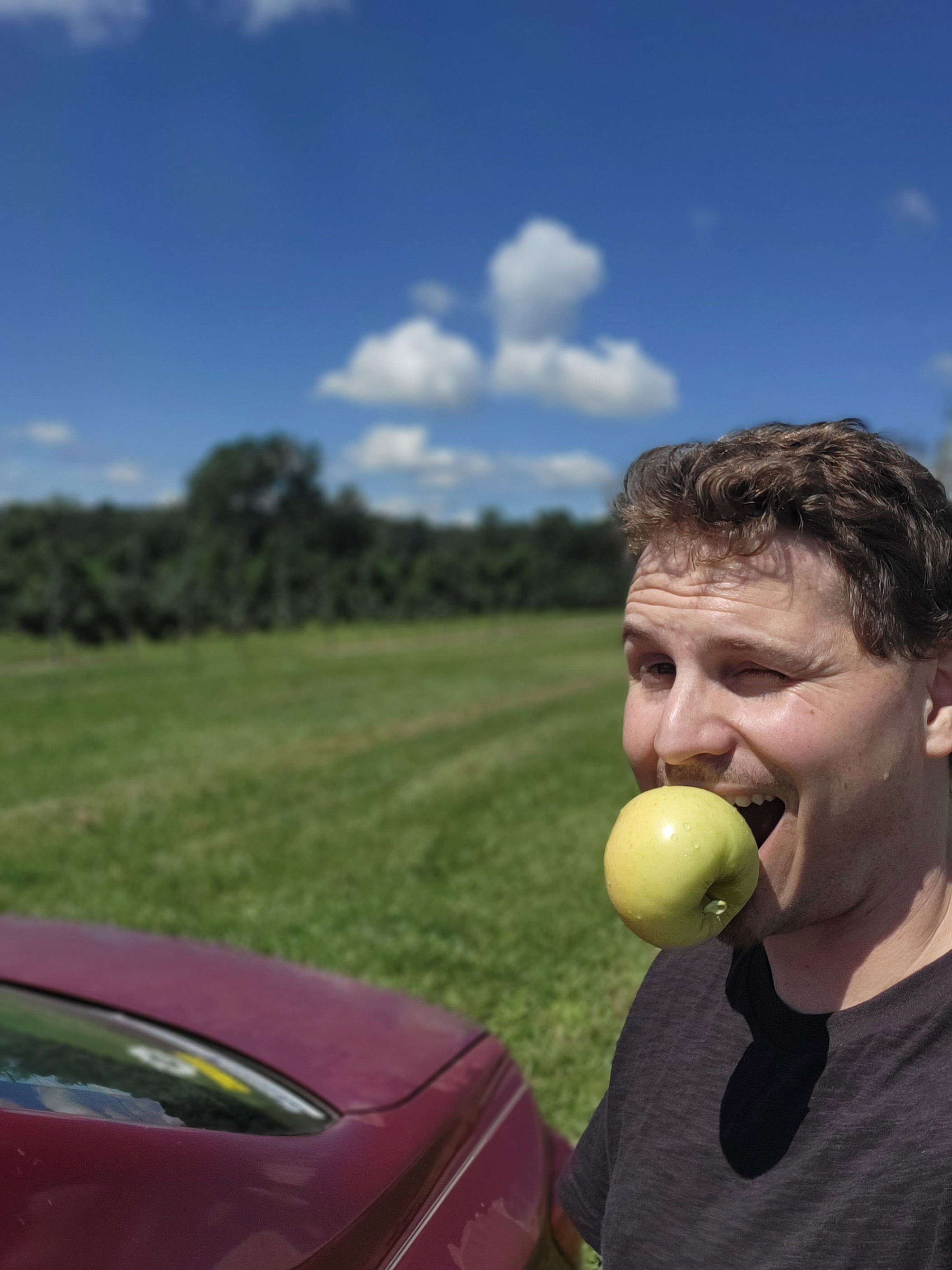



How about lower light? Based on my tests, it doesn't seem like there's very much difference between the Flip 3 and Flip 4, from what I can tell. The first lower light shot was in a dark bedroom where the only light was coming from the overcast sky outside, filtering in through the opened blinds. You can see the faint shadows cast on the wall behind me in both shots.
Neither phone did a particularly amazing job of capturing this lower light moment, even though both triggered the automatic night mode and asked me to hold the phone still for three seconds. The Fold 4 did a slightly better job of pulling in more detail, but I wouldn't call either picture an award winner.


The last is at 5 a.m. on the street, ensuring this is probably about as dark of conditions as you're normally going to take a photo in. While there's a clear difference in lighting quality between the two phones — the Fold 4 being the brightest picture with the most shadow detail — both phones look shaky and obviously held a very long shutter.
While the Flip 4's image is notably brighter than the Flip 3's, it comes across as washed out rather than naturally brighter. Plus, it doesn't seem like there's been any real improvement in reducing the negative effects of handshake on long-exposure photos.


Better is better

The differences between the Samsung Galaxy Z Flip 3 and Flip 4 might not be groundbreaking — or even as drastic as the Fold 3 vs. Fold 4 camera proved to be — but an improvement is an improvement, no matter how you slice it. The biggest improvements seem to be in low light quality, where the Flip 4 often takes night mode shots in half the time it takes the Flip 3 and still takes a slightly better quality photo.
Next generation, we'd love to see Samsung add a telephoto camera of some kind to the Flip, which would certainly help improve zoom quality quite a bit. As it stands, the Flip 3 or 4 aren't particularly great at zooming in to objects beyond 2-3x. But, if folding your phone in half is the priority and you don't need a camera that's absolutely amazing, the Flip 4 should get the job done.

